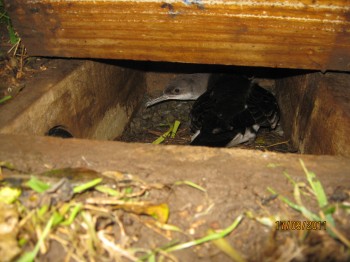Melody Durrett (Institute of Arctic Biology and Department of Biology and Wildlife, University of Alaska Fairbanks, Alaska, USA) and colleagues write in the journal Plant and Soil on how burrowing seabirds (Flesh-footed shearwaters Puffinus carneipes, Fluttering Shearwaters P. gavia, Grey-faced Petrels Pterodroma macroptera gouldi and Common Diving Petrels Pelecanoides urinatrix) structure soil and plant patterns.
The paper’s abstract follows:
Aims
This study investigates how burrow-nesting, colonial seabirds structure the spatial patterns of soil and plant properties (including soil and leaf N) and tests whether burrow density drives these spatial patterns within each of six individual islands that vary greatly in burrow density.
Methods
Within individual islands, we compared semivariograms (SVs) with and without burrows as a spatial trend. We also used SVs to describe and compare the spatial patterns among islands for each of 16 soil and plant variables.
Results
Burrow density within a single island was only important in determining spatial structuring in one-fifth of the island-variable combinations tested. Among islands, some variables (i.e., soil pH, δ15N, and compaction; microbial biomass and activity) achieved peak spatial variance on intermediate-density islands, while others (i.e., net ammonification, net nitrification, NH4 +, NO3 -) became increasingly variable on densely burrowed islands.
Conclusions
Burrow density at the within-island scale was far less important than expected. Seabirds and other ecosystem engineers whose activities (e.g., nutrient subsidies, soil disturbance) influence multiple spatial scales can increase spatial heterogeneity even at high densities, inconsistent with a “hump-shaped” relationship between resource availability and heterogeneity.

Fluttering Shearwater in its burrow, photograph by Shane Cotter
Reference:
Durrett, M.S., Wardle, D.A., Mulder, C.P.H. & Barry, R.P. 2014. Seabirds as agents of spatial heterogeneity on New Zealand’s offshore islands. Plant and Soil DOI 10.1007/s11104-014-2172-z.
John Cooper, ACAP Information Officer, 06 September 2015

 English
English  Français
Français  Español
Español